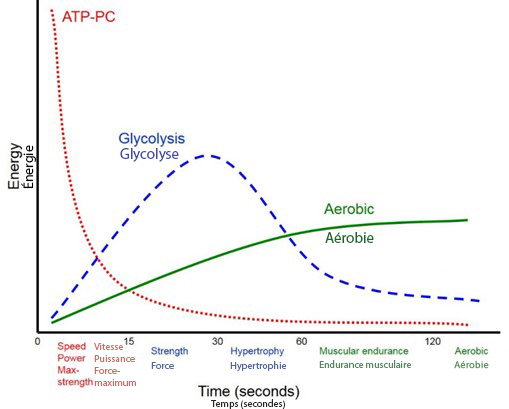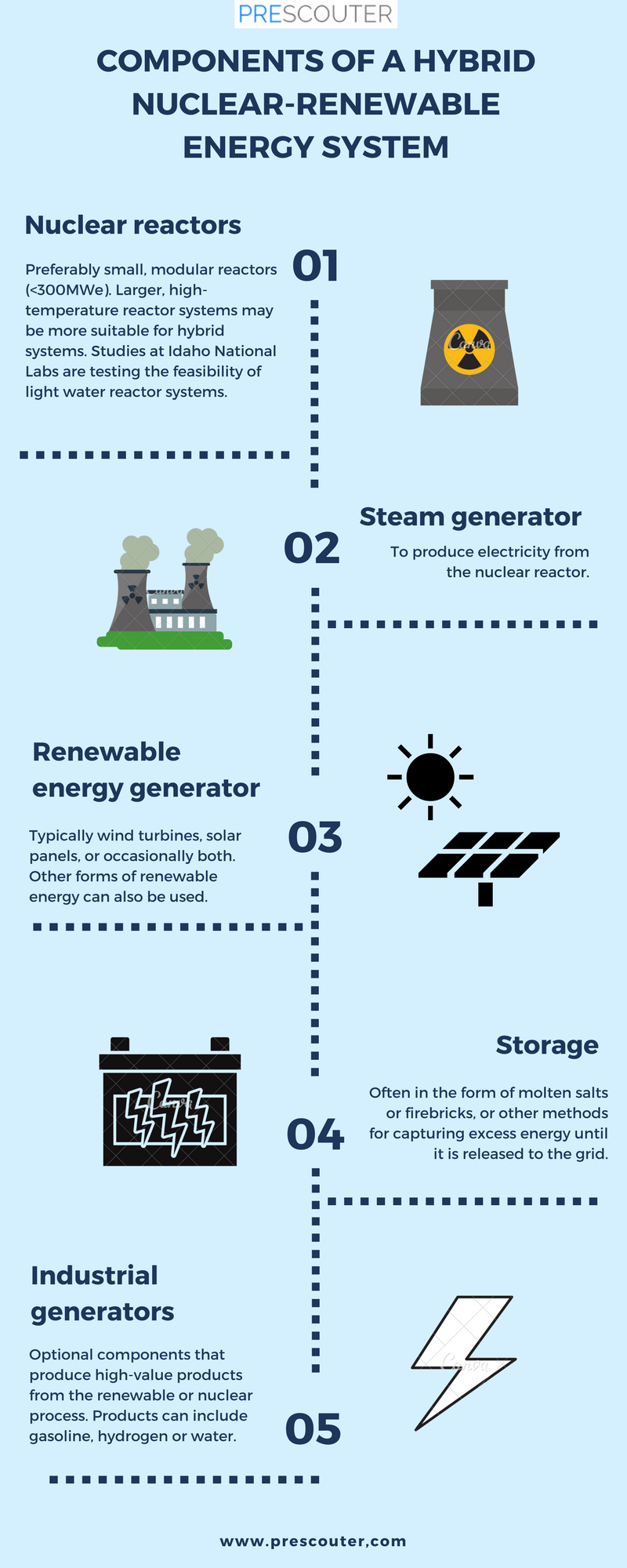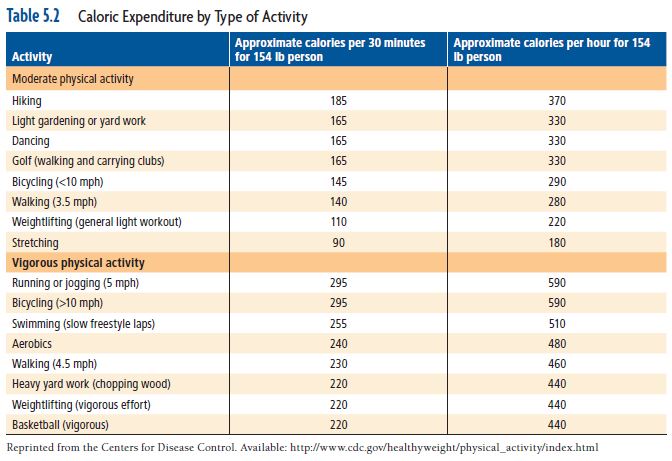The Dynamic Trio: Training for Peak Athletic Energy
Embark on a journey to understand the intricate energy systems that fuel your athletic pursuits. We'll unravel the mysteries of muscle fibers, dive into the realms of aerobic and anaerobic activities, and investigate how to harness these systems to boost your training. Along the way, we will see how tools like The Gym Notebook Replacement Resources can elevate your workout with concrete data and smart analytics.
WN
By Workout Notepad
November 18, 2023

The Starting Block: Understanding Your Energy Systems

energy systems infographic
As the cornerstone of athletic performance, understanding the body’s energy systems is akin to honing one’s engine for optimal efficiency and power. There are three main pathways by which the body converts fuel into energy: the anaerobic alactic system, also known as the ATP-CP system, which is ideal for rapid and intense activities lasting up to 10 seconds without producing lactic acid; the anaerobic lactic system, or the glycolytic pathway, kicks in for efforts lasting up to two minutes and is characterized by the production of lactic acid; and the aerobic system, which dominates during prolonged activities where oxygen is plentiful for energy conversion. Athletes of all kinds, particularly Masters athletes dedicated to track and field, harness these systems’ specific advantages by tailoring training to improve explosive power, sustained high-intensity efforts, or endurance capabilities, depending on their sport’s demands.
Diving deeper into the intricacies of muscular energy provision, the next section will reveal how different muscle fibers—type I, type IIa, and type IIx—are intimately linked with these energy systems. Fast-twitch fibers (type II), for instance, excel in short, powerful bursts, tapping predominantly into the anaerobic realms, whereas slow-twitch fibers (type I) are the endurance champions, relying extensively on the aerobic energy system. Understanding this relationship forms the bedrock for devising training strategies that can push an athlete’s performance from excellent to extraordinary. The mastery of these mechanisms, from the cellular machinery all the way through to the track, field, or gym, offers a route to exploit the full potential within each athlete’s fiber—stretching the limits of what they can achieve in their respective sports.
Muscle Fibers and Their Quest for Power
Diving deeper into the muscle fibers themselves provides us with a closer understanding of their critical role in achieving peak athletic performance. These fibers come in several types, notably slow-twitch (Type I) and fast-twitch (Type II) muscle fibers—each suited to match certain energy systems. Slow-twitch fibers are renowned for their efficiency in using oxygen to generate more fuel for continuous, extended muscle contractions over a long time, making them the hallmark of endurance athletes. Conversely, fast-twitch fibers excel at short, explosive bursts of power or speed, but fatigue more quickly, and are prevalent in sprinters and power athletes. Scientific studies reveal that a person’s unique composition of muscle fiber types not only dictates their inherent athletic strengths and weaknesses but also the types of activities they might naturally excel in due to this fiber-related preference for certain energy systems. For instance, a sprinter’s muscle composition could differ significantly from that of a marathon runner.
Fascinatingly, muscle fibers are not static entities; recent research highlights their adaptability or “plasticity”. Through dedicated training regimens, athletes can induce a transition between fiber types to optimize performance for their chosen sports—pointing to a collaborative relationship between resistance and endurance training, and muscle fiber makeup. The role of genetics cannot be ignored either, as heritable factors strongly influence muscle fiber composition. However, this does not overshadow the adaptability provided by consistent and carefully crafted training approaches. With the right stimulus, such as the varied intensity levels that different training programs offer, even an untrained individual’s muscle fibers can undergo transformative changes correlating with enhanced sports performance and health-related traits. Transitioning into the upcoming section, we will unwrap how training regimens leverage these energy systems in harmony with muscle fiber characteristics to amplify athletic prowess, whether aiming for short, explosive efforts or long-duration stamina.
Short Bursts to Long Hauls: Training Across Energy Systems
When training for short, high-intensity activities alongside endurance events, it is crucial to target the appropriate energy systems to receive the best performance outcomes. For explosive, short-duration activities, training plans should focus on exercises that engage the anaerobic alactic system, such as sprinting drills or plyometric jumps, which do not rely on oxygen and do not produce lactic acid. These exercises are typically performed in an ‘all-out’ manner for a brief period, followed by substantial rest, to allow for complete recovery before the next bout. In juxtaposition, endurance events hinge on the efficiency of the aerobic system. Training for such activities might include longer-duration, moderate-intensity efforts like distance running or cycling, orchestrated to push the threshold of the aerobic capacity and improve the body’s ability to utilize oxygen over prolonged periods.
Moving towards longer, sustained efforts, training should account for the anaerobic lactic system, which powers efforts lasting roughly one to three minutes. This is where high-intensity interval training (HIIT) becomes very effective, as it alternates between intense exertion and brief recovery periods, developing an athlete’s capacity to produce and tolerate lactic acid. Activities like middle-distance running, rowing, or swimming intervals are typical components of this space. What ties these efforts together is the principle of specificity; meaning training adaptations are highly specific to the type of activity, volume, and intensity of the exercises being performed. As we transition into the next section, we will explore the essential relationship between energy systems and strength training. In understanding how developing maximum strength underpins the ability of these systems to function optimally, one gains insight into the complete conditioning puzzle. We’ll see how the foundation of might parallels and supports the capacity for both short explosive actions and prolonged athletic endeavours.
The Strength Connection: Energy Systems and Lifting
Creating forceful movements, whether flinging a discus or deadlifting double one’s bodyweight, relies on our muscles’ ability to muster as much power as their fibers can handle. In sports and strength training, understanding the intricate dance between energy systems and muscle function is crucial. Strength isn’t just about muscular size; it’s about the explosiveness with which energy can be utilized. When energy systems are optimized, an athlete can achieve their peak output in their respective activities. For powerlifters, a well-conditioned phosphagen system is their best ally for those few critical seconds of maximum effort. Likewise, a basketball player darting up the court leverages both the phosphagen and the glycolytic systems to prevent fatigue and maintain pace throughout the game, utilizing short bursts of energy replenished during less intensive periods of play or breaks.
In the context of returning to play (RTP) post-injury, an athlete who has honed their energy systems alongside their physical strength will likely experience a safer and more effective recovery. The ability to manage energy efficiently during this phase is the underpinning of successful rehabilitation and subsequent competitive performance. A meticulous conditioning plan that considers the acute:chronic training load ratio and employs systematic progressions as noted in the StARRT framework helps ensure that the athlete’s return to the sport does not lead to re-injury but rather a sustainable come-back. The energy demands of each sport dictate the specifics of training, but across this vast spectrum, the bedrock remains the same: strong muscles driven by well-tuned energy systems forge resilient athletes. Transitioning now to intensity zones, we can expand upon the need for personalized training prescriptions that delineate clear boundaries for effort, where tools like The Workout Notepad app can be instrumental in defining and adhering to these targeted zones.
Redefining Intensity: Tailor Your Training with Zones
Training intensity zones are pivotal in crafting an effective workout regimen, and understanding these zones is crucial for optimizing athletic performance. These zones are based on the training intensity distribution (TID) concept and are tailored to help athletes focus on different physiological aspects of their training. Most persuasive evidence from retrospective and prospective studies suggests that a polarized intensity distribution—centering on high-volume, low-intensity training with sporadic high-intensity efforts—favors improved endurance performance over other TID models. By diligently incorporating time in different training zones, particularly emphasizing extensive low-intensity work with minimal duration in the middle zone, athletes seem to enhance their endurance capability while managing recovery more efficiently. Structures like the pyramidal TID have been supported by empirical evidence, indicating their prevalent use among elite athletes, suggestive of a beneficial impact on long-term physiological and performance development.
In practice, the implementation of such tailored training regimens can be significantly optimized through the application of smart training tools, like The Workout Notepad app. The app’s robust graph features allow individuals to visually dissect and comprehend the distribution of their workouts across various intensity zones. This granular look at one’s exercise habits can unmask the proportions of time spent in each zone, leading to adjustments and better adherence to the polarized or pyramidal models of TID proposed by research. By tracking workouts and engaging with the insightful data visualizations, athletes and trainers can fine-tune training plans to magnify the yield of each session, therefore setting the stage for a leap in athletic performance. With this data in hand, users are able to progress into the realm of precision training, enabling methods used by elite athletes to be integrated into the training of any individual focused on maximizing their athletic potential.
Data-Driven Training: Tracking Progress with Smart Tools
Tracking your fitness journey meticulously is akin to charting a map for buried treasure; the more details you highlight, the closer you get to the prize of optimal physical and performance gains. The NIFS Healthy Living Blog stresses the importance of this practice, correlating closely with data-driven tools like The Workout Notepad app, which elevates this process into an art form. The app’s capacity for attaching visual progress through photos and videos acts as a powerful motivator, giving users a tangible narrative to their evolving fitness story. Analyzing workout data over time unveils patterns and trends that render the user more adept at making informed decisions regarding training adjustments, which in turn can amplify results, whether it’s weight loss, muscle growth, or athletic performance.
Utilizing innovative fitness tracking does more than just document; it engages users in a methodical analysis, transforming raw data into actionable insights. With the Workout Notepad app’s features such as detailed per-category reports and easily interpretable graphs, athletes and fitness enthusiasts can dissect their workouts to understand the effectiveness of each session. As practitioners aim to tailor intensity zones from the previous section, these features help bridge the gap between theory and practice. Athletes can pivot seamlessly into the subsequent endeavor, which is mapping their workouts to the energy demands of their specific sport. This harmony between tracking technology and practical application crafts a game plan with the refined precision necessary to elevate performance in the sporting arena, proving that in the realm of targeted athletic training, data is undeniably king.
The Game Plan: Applying Energy Systems to Your Sport

sports energy demands
Crafting a sports-specific game plan necessitates a solid grasp of energy systems and their unique contributions to athletic performance. To apply this understanding, one must first recognize the primary energy system their sport engages: for example, the anaerobic a-lactic system fuels explosive actions in weightlifting, while endurance sports like marathon running predominantly rely on the aerobic system. On the playing field, this translates into customized training regimens where power athletes might focus more on relative strength and hypertrophy with low reps and generous rest, thereby optimizing explosive force without building undue fatigue. By contrast, endurance athletes would emphasize consistent strength endurance workouts that enhance the aerobic system’s efficiency, incorporating higher reps, longer sets, and shorter rests to model the unrelenting nature of their discipline.
To transform your individual athletic prowess, a tactical periodization approach is key—toscillating between these zones of training to correspond with in-season demands and off-season recovery. Meticulously scheduling these workout segments, with the aid of tools like The Workout Notepad app, allows the tracking of progression through quantifiable data; witnessing tangible improvements in strength, stamina, or speed further incentivizes and informs the training journey. As we round the final bend towards understanding the complete picture of energy systems in sports, the subsequent section will indulge in a playful yet erudite Q&A, tackling the common curiosities and myths surrounding this sophisticated element of athletic training.
Crossing the Finish Line: FAQs on Energy Systems Training
As we race towards the finish line of our deep dive into energy systems training, let’s tackle some of the burning questions you’ve been jogging with! Commonly asked is whether we need to train all energy systems even if our sport seems to rely predominantly on one. The resounding answer is yes! Just as a balanced diet gives you a breadth of nutrients, incorporating a variety of energy system training ensures comprehensive fitness that can give you an edge on the field. Think of it this way: even sprinters benefit from aerobic conditioning—it’s the wind beneath their rapid-fire wings.
Another frequent misconception is the notion that lifting weights will only make you slow and bulky, without enhancing your energy systems. This is lifting falsehoods rather than weights! Resistance training can contribute significantly to power in the phosphagen system, while also improving efficiency in tension management and fatigue resistance crucial to all three energy systems. Remember, every type of exercise can contribute to your energy profile in a way that complements your sport. Make a training game plan not by sprinting towards fads but by understanding the rich interplay between energy systems, muscle optimization, and the marvels of human physiology.
SOURCES
- https://us.humankinetics.com/blogs/excerpt/understanding-energy-systems-training
- https://www.sportmanitoba.ca/https-www-sportmanitoba-ca-sport-science-report-training-energy-systems/
- https://www.canada.ca/content/dam/rcaf-arc/migration/images/news-nouvelles/2020/10/1-figure-1-en-fr-mod.jpg
- https://www.canada.ca/en/department-national-defence/maple-leaf/rcaf/2020/10/track-and-field-for-masters-athletes-6-understanding-energy-systems.html
- https://www.sportmanitoba.ca/https-www-sportmanitoba-ca-sport-science-report-training-energy-systems/
- https://pswordpress-production.s3.amazonaws.com/2017/12/Components-of-a-hybrid-nuclear-renewable-energy-system-1.png
- https://www.ncbi.nlm.nih.gov/pmc/articles/PMC8473039/
- https://www.ncbi.nlm.nih.gov/pmc/articles/PMC8670815/
- https://us.humankinetics.com/blogs/excerpt/understanding-energy-systems-training
- https://www.sportmanitoba.ca/https-www-sportmanitoba-ca-sport-science-report-training-energy-systems/
- https://us.humankinetics.com/blogs/excerpt/understanding-energy-systems-training
- https://www.ncbi.nlm.nih.gov/pmc/articles/PMC5534159/
- https://www.ncbi.nlm.nih.gov/pmc/articles/PMC4621419/
- https://www.freeletics.com/en/blog/posts/training-intensity-zones/
- https://www.nifs.org/blog/7-reasons-to-track-your-fitness-progress
- https://www.runstreet.com/blog/benefits-of-track-workouts
- https://us.humankinetics.com/blogs/excerpt/understanding-energy-systems-training
- https://www.bodybuilding.com/content/3-basic-energy-systems-provide-secrets-allow-trainers-to-perfect-goal-oriented-exercise.html
- https://www.nsca.com/contentassets/248702b0fc87411581d82ef81bba005b/2.-understand-the-energy-demands-of-the-tactical-athlete–table-5.2.jpg
- https://us.humankinetics.com/blogs/excerpt/understanding-energy-systems-training
- https://www.trainheroic.com/blog/everything-you-need-to-know-about-energy-systems/
